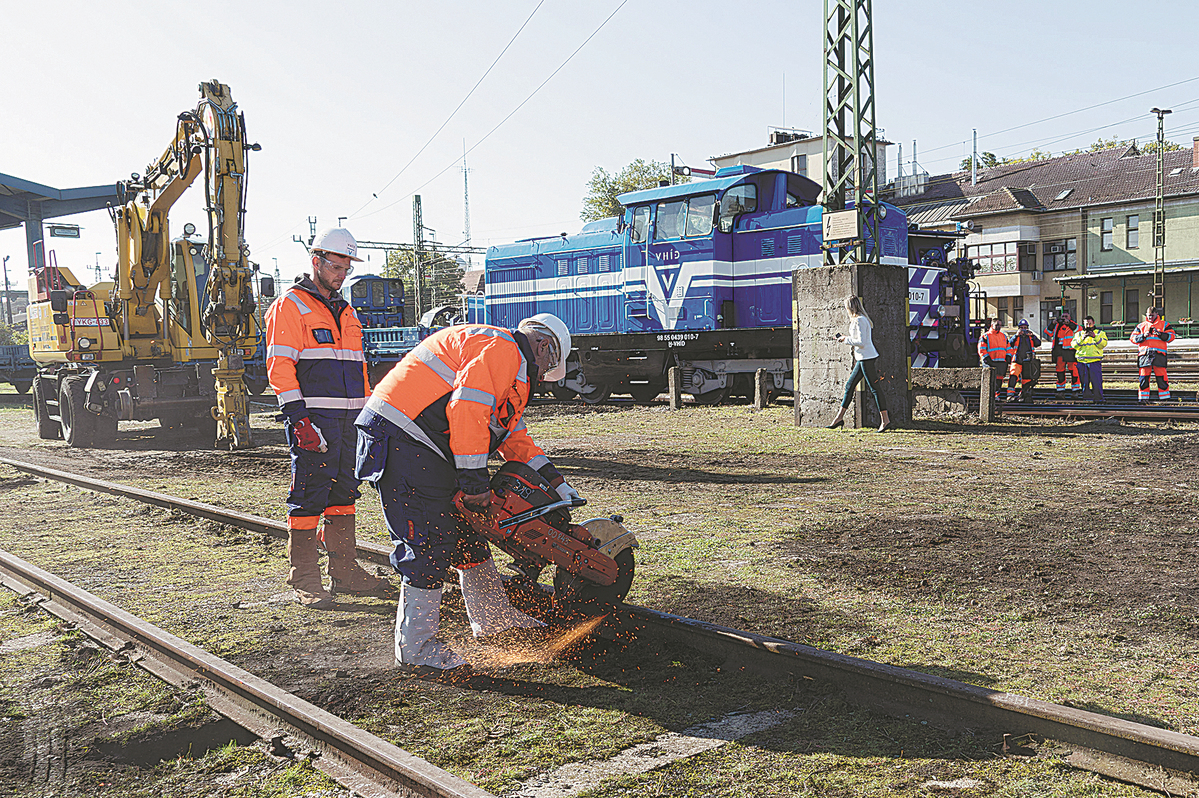Country eager to share its high-speed rail experience
By LUO WANGSHU | CHINA DAILY | Updated: 2022-08-30 07:59

Technological advances help China make rapid progress in sector
China has accumulated vast experience in developing high-speed railways at home and is willing to share its know-how with the rest of the world, according to experts.
The nation started to research building high-speed railways in the 1990s, when Japan had been operating its Shinkansen bullet trains for more than 20 years.
In 2008, the first high-speed railway-operating at a speed of 350 kilometers per hour-opened in China, linking Beijing and Tianjin. The link heralded the beginning of the nation's high-speed rail development.
Although it was a late starter, China has forged ahead in the sector for more than 30 years, moving from being a follower to a leader in building high-speed railways globally.
According to national railway operator China State Railway Group, the nation now runs such railways at the highest speed and under the greatest variety of operational scenarios. China has also developed the most comprehensive technologies and gained the richest railway management experience in the world, according to the company.
With significant progress and major breakthroughs achieved in a short time, China ranks first globally in terms of the scale of its high-speed rail network that is either operational or under construction, the company added.
By the end of last year, China's high-speed railway network stretched for 40,000 km, accounting for more than two-thirds of the total length of such networks worldwide.
The pace of building more such routes has not slowed, and in the first half of this year, nearly 996 km of new high-speed lines were put into operation in China.
China State Railway Group said: "The nation has developed world-class high-speed railway technologies, and it leads the world in some fields. For example, bullet trains were a key step taken by China as it transformed from being a follower to a leader in such technologies."
Sharing experience
China is eager to share its experience and knowledge with other countries and regions. It is taking part in international projects such as the Jakarta-Bandung High-Speed Railway in Indonesia, the China-Laos Railway, and the Belgrade-Budapest Railway, which links Serbia and Hungary.
Eleven bullet trains and an inspection train made for the Jakarta-Bandung high-speed railway left Shandong province on Aug 21 for shipment to Indonesia. The trains were developed based on the advanced and mature technologies for China-made Fuxing bullet trains, which operate at a speed of 350 km/h.
The trains' designer and developer, CRRC Qingdao Sifang Co, took into account local conditions and routes in Indonesia-incorporating elements of Indonesian culture to give passengers a more comfortable traveling experience.
Zhang Fangtao, a senior engineer at CRRC Qingdao Sifang, said: "For the local coastal weather, which is hot, humid and foggy, we used a high-standard, anti-corrosive design. In addition, the line has some long and steep slopes, so we used a design to enable the trains to accelerate faster and to climb slopes more quickly."
Xia Jian, senior engineer at China Railway Design Corp, who led the Jakarta-Bandung high-speed railway's design, said: "Passengers traveling between Jakarta and Bandung usually take the freeway or use a railway that is more than 100 years old, which is less comfortable, with the journey taking more than three hours. After the high-speed line opens, it will greatly reduce traffic jams between the two cities, attract investment, reduce environmental damage, and promote commerce and tourism."
The line will also greatly benefit local residents, just as the high-speed rail network in China has done, Xia added.
The Jakarta-Bandung high-speed line, which is expected to open in June, is China's first overseas railway project to fully adopt Chinese technologies and standards. It is also a landmark project for the China-proposed Belt and Road Initiative.
All 13 tunnels on the line have been completed, along with more than 90 percent of the civil engineering work, including track beds, bridges and stations, according to China Railway International, which is overseeing the project and is a subsidiary of China State Railway Group.
The 142-km line, with a designed speed of 350 km/h, will cut the journey time between Jakarta and Bandung, capital of West Java province, from about three hours to 40 minutes.
Complex geological conditions along the line posed challenges for designers and constructors, but engineers worked to improve the design quality by incorporating China's latest high-speed railway technology.
Xia said, "Local culture and religion have been fully respected in the design for the line's stations, which all have bathrooms and prayer rooms for Muslims."
























